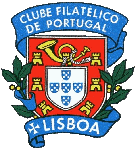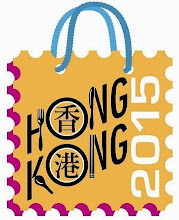 |
| Souvenir sheet 'Camisa de Noivo', Guimarães |
In our traditional society, the embroidery was, and is a female activity.
From an early age, girls learn, within the contact with older women of the family, the first points. In this "school", the only that, many times, had access, was also initiated in other knowledge and secrets of life slowly unravelling came.
homely feel this in the long winter nights spent around the fireplace, rehearsing points are simpler and more complex, which were stored in small strips of cloth, known as Maps or showcases. These examples serve as a reference to a day later be played back on clothing and layette.
From north to south and the islands they wrote themselves, very original, true declarations of love, in love scarves. Marriageable girls to great pains in its composition, embroidering a set of reasons for loving great symbolism (hearts, birds, doves, albarradas, brambles etc..) Stressed that with verses. Once ready, the handkerchief was given to the spoken, which should use the festivities as a sign of commitment. Also the shirt of Guimarães, the groom wore on their wedding day, was lovingly embroidered by his fiancee.
embroidering was sent that message, as shown in the phrase that adorns the bag Glória do Ribatejo.
Among the works that the most beautiful brides performed, include the Quilt Engagement of Castelo Branco. Embroidered on natural linen color, with coloured silk threads loose, show, in its composition, a strong Eastern influence.
Further south, arriving Arraiolos rugs that there are ancient and unknown origin.Also in these parts, the Eastern influence is present in the composition and choice of decorative elements - animals, flowers, albarradas - executed with polychrome wool yarn at the point of Arraiolos.
Across the sea, Madeira, to admire the embroidery most of us have internalized and which hold greater economic value. Released from the mid-nineteenth century, these works are for women's clothing and household linen to a clientèle eager and appreciative of refinement. Today, like yesterday, is almost always choose the white fabrics, filled with elaborate compositions performed with the same colour lines.
In the Azores highlight because it is less known, the Straw Embroidery, where small decorative motifs are executed with straw and chipped wires pita (aloe) on tulle, creating a huge light parts.
Today, the Embroidery identified as belonging to different regions of our country has specific characteristics that allow us to identify its origin. The result of a long evolution site, where various influences met and reinvented, embroidery is a product whose value exceeds the cultural significance of each piece.
From an early age, girls learn, within the contact with older women of the family, the first points. In this "school", the only that, many times, had access, was also initiated in other knowledge and secrets of life slowly unravelling came.
homely feel this in the long winter nights spent around the fireplace, rehearsing points are simpler and more complex, which were stored in small strips of cloth, known as Maps or showcases. These examples serve as a reference to a day later be played back on clothing and layette.
From north to south and the islands they wrote themselves, very original, true declarations of love, in love scarves. Marriageable girls to great pains in its composition, embroidering a set of reasons for loving great symbolism (hearts, birds, doves, albarradas, brambles etc..) Stressed that with verses. Once ready, the handkerchief was given to the spoken, which should use the festivities as a sign of commitment. Also the shirt of Guimarães, the groom wore on their wedding day, was lovingly embroidered by his fiancee.
embroidering was sent that message, as shown in the phrase that adorns the bag Glória do Ribatejo.
Among the works that the most beautiful brides performed, include the Quilt Engagement of Castelo Branco. Embroidered on natural linen color, with coloured silk threads loose, show, in its composition, a strong Eastern influence.
Further south, arriving Arraiolos rugs that there are ancient and unknown origin.Also in these parts, the Eastern influence is present in the composition and choice of decorative elements - animals, flowers, albarradas - executed with polychrome wool yarn at the point of Arraiolos.
Across the sea, Madeira, to admire the embroidery most of us have internalized and which hold greater economic value. Released from the mid-nineteenth century, these works are for women's clothing and household linen to a clientèle eager and appreciative of refinement. Today, like yesterday, is almost always choose the white fabrics, filled with elaborate compositions performed with the same colour lines.
In the Azores highlight because it is less known, the Straw Embroidery, where small decorative motifs are executed with straw and chipped wires pita (aloe) on tulle, creating a huge light parts.
Today, the Embroidery identified as belonging to different regions of our country has specific characteristics that allow us to identify its origin. The result of a long evolution site, where various influences met and reinvented, embroidery is a product whose value exceeds the cultural significance of each piece.
Acknowledgments:
Madalena Farrajota, Instituto dos Museus e da Conservação / Divisão de Documentação Fotográfica (IMC/DDF), Instituto do Vinho, do Bordado e do Artesanato da Madeira (IVBAM), Museu de Arte Popular
Technical Details
Date of Issue: 28 June 2011
Values: Stamps of € 0,32; €0,47; €0,57; €0,68; €0,80 and €1,00 + two miniature sheets with one stamp of 1.75€ each
Designer: Sofia Raposo
Printer: Cartor Security Printer
Process: 4-colour offset lithography
Size: stamps 30.6 mm x 40.0 mm; souvenir sheets 125mm x 95 mm
Perforation: Cross of Christ 13 x 13
Paper: FSC 110g/m2
Watermark:
Sheet: sheets of 50 stamps

























.png)






































No comments:
Post a Comment